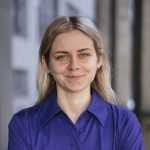
Breaking Accessibility Barriers: 15 Assistive Products for Equal Life and Healthcare
Contents
Contents
Many people with disabilities feel like they navigate a world that is not designed for them. It’s mainly because our physical and virtual environments are built without considering the full spectrum of human diversity, including those with physical, sensory, cognitive, or other challenges. The lack of widespread awareness about these barriers further obscures the understanding of the difficulties that people with disabilities face in their daily lives when trying to adapt to the existing system.
In our previous article, we discussed how around 16% of the global population (1.3 to 1.85 billion people) live with some form of a disability. Add to this factors like the increasingly aging population and rising disability rates, and this number can easily be rounded to 2+ billion people who need assistive products to live a normal, fulfilling life without feeling excluded from society.
As Dr. Linamara Battistella, professor at the University of São Paulo School of Medicine, has said, “There is only one world, and it must have room for all of us.” Digital accessibility expands opportunities, exposes inequity, and creates more ways for us to stay connected.
Examples of the best assistive products for people with disabilities
Seeing AI — An AI-based app for visually impaired users
Microsoft’s Seeing AI, the “talking camera for the blind,” offers audio guidance for the low-vision community across various scenarios. It provides audio descriptions to text when it appears in the smartphone’s camera viewfinder, identifies products and surroundings, and learns to recognize and locate the faces of the user’s friends and family over time. As an ongoing research project, Seeing AI should be able to identify currency bills for cash payments in the near future and have more image recognition and description features.
Speechify — The leading text-to-speech voice application
Speechify is text-to-speech (TTS) software that converts text into audio with AI voice-over, dubbing, transcription, and more. Its TTS option helps users listen to and organize files in their browser, like Google Docs, websites, emails, and PDFs. Speechify supports over 40 languages and offers a selection of advanced human-sounding AI voices to read aloud. Compatible with Chrome, iPhones, Macs, and Androids, it especially benefits students with ADHD and dyslexia.
ReBokeh — A low vision-enhancing app
ReBokeh represents a modern assistive solution that offers a novel approach beyond traditional tactile and audio aids. The app was designed in collaboration with and for people with moderate vision impairment. Users can adjust their camera feeds to alter how they perceive their surroundings using customized filters and presets. Instead of overpowering it, the app enhances existing vision and is currently available only for iOS.
Alexa Smart Properties — Immersive voice experiences
Alexa Smart Properties offers property-ready features that simplify the deployment, integration, and management of Alexa-enabled devices and experiences at scale for different property types, including healthcare, hospitality, and senior living. In healthcare, voice-driven experiences help patients stay connected and engaged, enabling them to handle routine questions and requests independently. This reduces the burden on care teams, giving them more time to perform complex tasks and allowing nurses to monitor patients remotely.
Sullivan Plus — Voice guidance for the visually impaired
Sullivan+ by TUAT Corp. is an app designed to assist people with visual impairments or low vision. It is available for both Android and iOS and offers various features that provide visual aid information captured through the smartphone’s camera. These features include text recognition, image description to identify objects in proximity, face recognition to detect individuals and estimate their age and gender, color recognition to inform a single color or multiple colors in an image, magnifier to zoom in, and light brightness to inform light intensity through sound.
Eshmun — A telenursing app for elderly patients
Launched in 2022, Eshmun is Beetroot’s ongoing R&D project. It is a telemedicine app for caregivers (nurses, family members, doctors, and other care providers) to monitor their elderly wards’ health using real-time telemetry. The core feature of the Eshmun app is real-time communication using proprietary smart devices. Currently, wardens can access patient data via a web portal (the caregiver’s dashboard). Our team works on a mobile app and other tools to extend the care providers’ capacity. One of the top priorities here is ensuring compliance with the healthcare system’s obligatory standards (HIPAA, GDPR, or PIPEDA).

Tobii Dynavox — Assistive tech for communication
Tobii Dynavox is one of the world’s leading assistive technology companies. Its product suite includes eye-gaze-enabled speech-generating devices, assistive eye trackers, and hands-free augmentative and alternative communication (AAC) apps for people with disabilities. These AAC products help users capture and understand human attention and intent and express themselves using gestures, body language, vocalizations, facial expressions, pointing, and signing.
NOA — A smart co-pilot for blind and visually impaired people
An AI-powered smart harness for people with vision loss, NOA by biped.ai, helps them detect obstacles and get GPS instructions. It uses self-driving car software from the Honda Research Institute. The product is equipped with wide-angle cameras, a computer, and batteries to ensure safe mobility. It uses AI to identify dangers and obstacles, guide the user, warn them, and provide audio feedback to describe their surroundings.
Speak’n’Hear — A communication app for those with hearing and speech disability
Speak’n’Hear is a mobile app designed by Beetroot. We built it in cooperation with and inspired by our team member with hearing and speaking challenges. The app aims to bridge communication gaps for deaf users and people with speech difficulties and improve their sense of security and confidence when accessing health services. Speak’n’Hear serves as a tool for speech recognition and converting it into text, combined with text-to-speech functionality for full two-way communication. It utilizes OpenAI Whisper for speech recognition and transcription. Built on real-life examples, the app aims to empower the deaf community and foster greater inclusion and social interaction in a speech-centric society.
Signapse — An AI sign language translator
Signapse provides AI solutions for clients who want access to sign language interpretation and translation. Their team of Deaf and hearing tech enthusiasts created a real-time sign language translator software. Users will see a synthetic signer (based on the footage of real actors) who will translate the content into sign language. These automated translations can be used in public spaces to make announcements, on websites to interpret written text, for videos, as written captions are not fully accessible for Deaf people, and in other ways that improve content accessibility to the deaf community.
FACIL’iti — A customized browsing companion
FACIL’iti is an innovative digital solution that enhances website accessibility for users with disabilities, including visual, motor, and cognitive challenges. FACIL’iti allows users to adjust their display settings according to their needs (e.g., change the font size, color contrast, and spacing), is compatible with popular browsers, and works on the most common smart devices (PCs, tablets, and phones). The combination of the app’s filters can be easily customized to respond to even more unique needs and health conditions.

Charco Neurotech — A smart device for Parkinson’s
Developed by a team of engineers, designers, and clinicians, Charco Neurotech presented CUE1, a non-invasive wearable device for people with Parkinson’s to enhance their quality of life. The device uses pulsed cueing and focused vibrotactile stimulation to improve movement and alleviate symptoms like slowness, rigidity, and freezing of gait associated with Parkinson’s. The CUE app allows users to adjust their CUE1 and customize the simulation settings, set medication reminders, and track individual symptoms to better manage their condition over time.
BTS Bioengineering — Advanced motion capture mobility solutions
BTS Bioengineering offers a wide range of cutting-edge motion analysis systems for the engineering, medical, and sports science sectors. They can be applied to the functional evaluation of gait and posture (in orthopedic and neurological fields), functional assessment of any human-machine interaction (e.g., for ergonomics and drone development), evaluation and treatment of children with cerebral palsy, physical rehabilitation with biofeedback and virtual reality, cognitive and mobility rehabilitation in hospitals and at home (NIRVANA, BTS TELEREHAB, FREELAB), sports biomechanics (e.g., BAIOBIT, a wearable motion analysis system), injury prevention and body data-driven recovery, and more.
Munevo Drive — Smart head control systems for wheelchairs
The Germany-based Munevo develops smart wheelchair systems where users who cannot control it using their hands can do so with smart glasses. Currently, munevo DRIVE relies on Google Glass as a hardware, and the company plans to develop a proprietary device in the future. The control of the wheelchair is intuitive; users can adjust the direction in which it is moving using subtle head-turning, tilting, or nodding gestures. The smart glasses pick up head movements, which are translated to wheelchair control signals and calibrated via an app. The system opens the door to freedom, independence, and mobility for many otherwise vulnerable people.
Sociability — A navigation app to locate accessible places
Sociability is an app for people with disabilities that helps them find accessible places by providing detailed and reliable maps of venues like restaurants, pubs, and bars. It lets users quickly find, tag, and share accessibility information with their peers and family. Sociability is available for free on iOS, Android, and Web. It aims to organize accessibility information for millions of users, give them peace of mind, and help accessible businesses be more visible and stand out.
Why does accessibility matter in healthcare app development?
The innovations in health technology aim to reduce global health inequalities through tools like telemedicine, patient portals, and mobile health apps. Yet, at the same time, the more advanced the technology becomes, the higher the risk it could exacerbate the existing digital divide. This disparity stems from limited resources and the ability of people to engage with digital environments, impacted by geography (low-income vs. high-income communities), digital literacy, age, gender, disabilities, cultural factors, and more. Digital health solutions are, hence, both a facilitator and a potential obstacle to achieving health equity.
As healthcare increasingly relies on software technology, we, as tech innovators, have to work towards closing the existing access gaps rather than creating new ones. In the context of healthcare app development, accessibility refers to building tools that are easy to use and understand for all users, acknowledging the principles of accessible development, designing with inclusivity in mind, and embodying all the best practices that go beyond ethics and compliance.
How can you start accelerating accessibility and equity in digital health?
Making digital health tools more accessible does more than improve usability—it directly leads to better patient outcomes, improved lives, and better service for the population as a whole. Start building a diverse and inclusive team. In fact, many of today’s technological improvements exist thanks to people with disabilities. Diverse teams bring in very different perspectives and viewpoints, resulting in more innovative and widely accessible products inspired by the lived experiences of users with different abilities.
By prioritizing equity in HealthTech development and using diverse data reflecting all patient experiences, it is possible to spot and adjust for bias in steps like research and algorithm development. Involving users and stakeholders in the development process allows you to build user-centric, evidence-based, and more sensitive apps, as their feedback will give you insights into what works and what doesn’t to meet the users’ specific needs.
At Beetroot, we take pride in connecting our clients with subject matter experts in key domain areas like healthcare, genomics, scientific research, or health policy regulations to make data-driven decisions and strengthen the existing development teams. Analyzing client needs and current trends also helps us in project discovery and R&D. If you are looking to bring new competencies to your team to build an impactful and accessible solution, Beetroot can help—drop us a line to find out how.
Subscribe to blog updates
Get the best new articles in your inbox. Get the lastest content first.
Recent articles from our magazine
Contact Us
Find out how we can help extend your tech team for sustainable growth.







